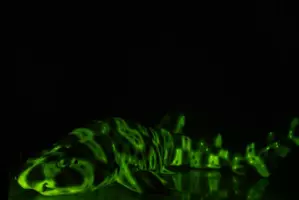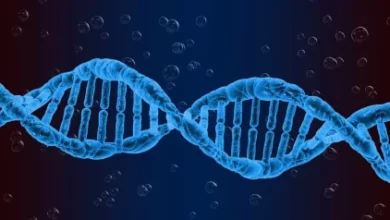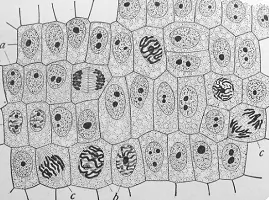Echinoderms: main characteristics and their classification.
Echinoderms are a phylum of invertebrates, all of them marine whose name comes from the Greek echinos (thorn) and dermis (skin) therefore prickly skin. This group includes sea urchins , starfish , holothurians, starfish and crinoids or sea lilies.
The distinctive features of echinoderms are their ambulacral system, their secondary pentameric symmetry (only adults have it), and their internal skeleton formed by calcareous ossicles.
They are deuterostomous animals , which means that the anus is formed first and then the mouth in development.
Pentameric radial symmetry
The echinoderms have radial symmetry which is divided into five sections or multiples of these five. However, this symmetry is thought to be a secondary acquisition since the symmetry of the larva is bilateral.
Ambulatory system in echinoderms
The ambulacral system is a system of tubes and chambers that run through the interior of the echinoderm and lead to the exterior through numerous tube feet. The ambulacral system is filled with liquid and depending on the class within the phylum echinodermata it can have some functions or others.
The ambulacral system can aid movement, feeding, gas exchange, fixation to the substrate, and sensory perception.
The ambulacral apparatus or system is filled with a liquid with a composition very similar to sea liquid, although proteins, a high concentration of potassium and coelomites can also be found in it. It is connected to the external environment through the madreporic plate to regulate the pressure of the liquid with respect to the environment.
The radial foot and channel system allows all the fluid to reach all parts of the echinoderm.
Endoskeleton
The endoskeleton of echinoderms is composed of calcium carbonate ossicles found in a dermis that is derived from the mesoderm and lies beneath the epidermis. Below the dermis layer are muscular layers and the peritoneum of the coelom.
The ossicles that make up the skeleton are calcite with small amounts of magnesium carbonate. They usually have spines (fixed or mobile) and also protrusions (such as tubers or granules).
The asteroidea and echinoidea echinoderms (starfish and sea urchins) have clip – shaped structures called pedicellariae with varied functions: prevent larvae adhere to the animal, have a defensive or offensive role function.
This skeleton is variable according to the groups: in hedgehogs the endoskeleton has the ossicles closely attached to each other, creating a rigid shell with very underdeveloped muscles. In the skeleton you can see the pentameric symmetry. In holothurians the ossicles are very small with very well developed muscular layers.
Classification of echinoderms
As we have commented previously, the echinoderms are classified as: Asteroidea, Ophiuroidea, Echinoidea, Crinoidea and Holothurioidea.





2 Comments